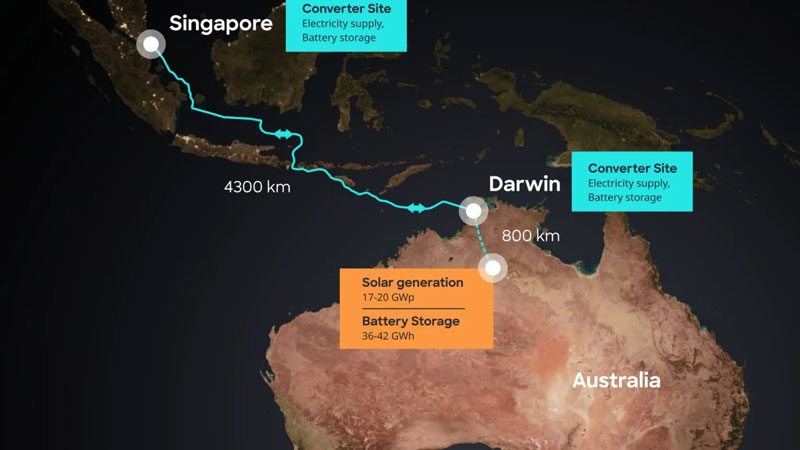Australia’s current Environment Minister Tanya Plibersek has announced the issuance of an environmental permit for the creation of the world’s largest solar power plant in the country. Details of the project will be settled by 2027, and the station is expected to be commissioned in 2030. Australia will keep two-thirds of the energy to power 3 million homes, and transfer the rest via an undersea cable to Singapore, becoming the world center of solar energy.

Image source: SunCable
The local company SunCable intends to implement the project. Its cost will be $24 billion. Environmentalists agreed to issue a permit only after the designer convinced the authorities to take good care of the population areas of the local variety of chipmunks – rabbit bandicoots.
The solar farm will spread over an area of 12 thousand hectares in northern Australia. The cost of the work will include the creation of an 800 km long power transmission line to the city of Darwin and the laying of a 4,300 km long submarine cable to Singapore. The peak generation capacity of the future power plant will reach 20 GW. The buffer will be a pool of batteries with a capacity of up to 42 GWh. 4 GW will be provided for the needs of Darwin and the surrounding area, and 2 GW for Singapore. The minister and sources are confused about the measurements, but most likely we are talking about gigawatt hours.
Until now, the world’s most powerful solar power plant was a new facility in China with a design capacity of 8 GW. If the Australian authorities keep their promises, they will be able to be proud of a new superpower on the world map – the world’s most powerful solar energy industry.
«It will be the largest solar complex in the world and will position Australia as a global leader in green energy,” said Environment Minister Tanya Plibersek.
The undersea electric cable could supply up to 15% of Singapore’s electricity needs. The project is mainly aimed at providing Australia with clean energy. True, Australian scientists are sounding the alarm, pointing out that the country is rapidly turning into a dump of dead solar panels. However, politicians at the helm of Australia are adamant – there will be no nuclear energy in the country with its expensive and slow-to-build reactors.